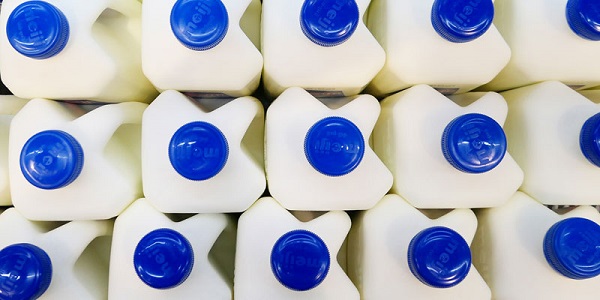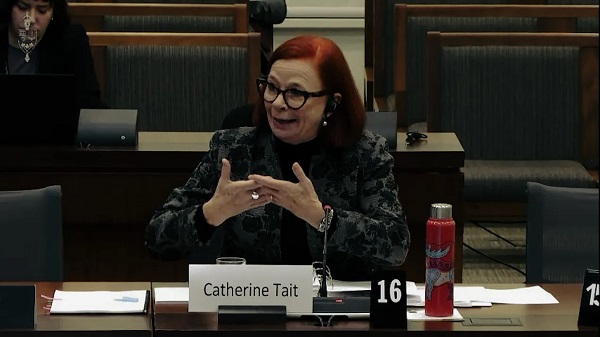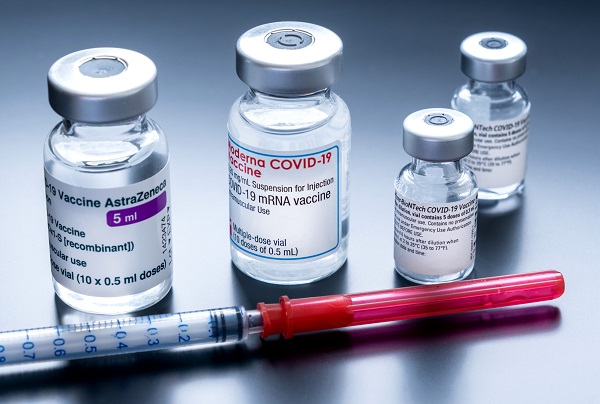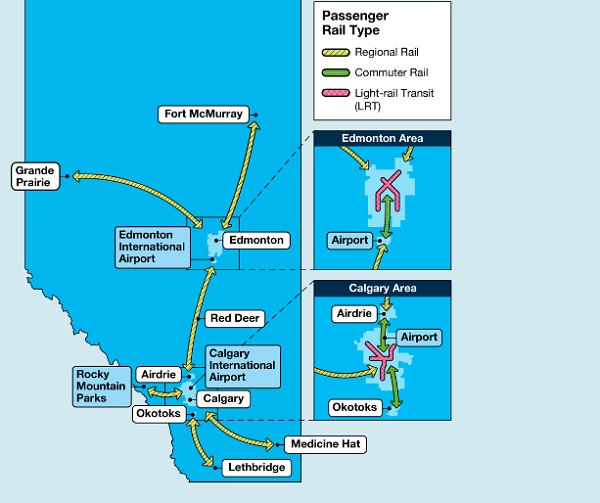Agriculture
Garlic Festival Takes Shelter from the Weather!

Red Deer’s 2nd annual garlic festival, Garlic City Market is coming up on Sunday, September 30, to help raise
funds to rebuild the barn at Piper Creek Community Gardens in south Red Deer.
Since 2016, ReThink Red Deer has been supporting a weekly farmers market called Garden City Market. On
September 30th this special pop-up version is happening again due to rave reviews for last year’ inaugural
event.
Due to inclement weather, the organizers have moved the event to Pioneer Lodge in Parkvale, Red Deer – 4324, 46A Ave (behind the Red Deer Museum & Art Gallery).
This event features local garlic growers and many familiar local market vendors selling their wares and fall
harvest produce including, Steel Pony Farm, Country Thyme Farm, and Ruby’s Mercantile.
The market is open 11am-4pm with FREE general entrance, but donations are encouraged and welcome where all
proceeds go towards the proposed rebuilding of the barn at Piper Creek Community Gardens (40th Ave –
south Red Deer).
The barn is an historic part of the community garden and has recently been removed for safety reasons by The City of Red Deer. As part of the ongoing Piper Creek Restoration Agriculture Project on site, organizers plan to rebuild the barn as an open-air timber frame structure with rainwater harvesting and the inclusion of pollinator habitat in the open-air walls, making it the world’s largest pollinator hotel!
For more information on Garlic City Market, please contact Rene Michalak, Project Lead at 403-505-4550
or by email [email protected]
Agriculture
Saskatchewan potash vital for world food

From Resource Works
Fertilizer Canada says the fertilizer industry contributes $23 billion a year to Canada’s economy and provides over 76,000 jobs.
A small potash extraction company in Manitoba calls Saskatchewan “the Niagara Falls of potash in Canada.”
The current 10 mines in Saskatchewan produced around 13 million tonnes in 2023, accounting for some 33% of global potash production, and exported 95% of it to more than 75 countries.
Potash mine No. 11 in Saskatchewan is working toward production in late 2026. That’s the $14-billion Jansen mine, owned by BHP, located 140 kilometres east of Saskatoon. It aims to produce around 8.5 million tonnes a year to start, and as much as 16–17 million tonnes a year in future stages.
With potash used primarily in agricultural fertilizers, Saskatchewan’s output is a key ingredient in global food security. Fertilizer is responsible for half of the world’s current food production.
As Real Agriculture points out: “Fertilizer production is not only an economic driver in Canada, but it is also a critical resource for customers around the world, especially in the United States.”
This is particularly important as Russia’s war on Ukraine has raised doubts about reliable supplies of potash from Russia, the world’s No. 2 producer, which produced 6.5 million tonnes in 2023.
In fertilizers, the potassium from potash increases plant growth and crop yields, strengthens roots, improves plants’ water efficiency, and increases pest and disease resistance. It improves the colour, texture, and taste of food. Natural Resources Canada adds: “Potassium is an essential element of the human diet, required for the growth and maintenance of tissues, muscles and organs, as well as the electrical activity of the heart.”
Canada’s federal government has included potash as one of 34 minerals and metals on its list of critical minerals.
Fertilizer Canada says the fertilizer industry contributes $23 billion a year to Canada’s economy and provides over 76,000 jobs.
The potash operations in Saskatchewan are in the Prairie Evaporite Deposit, the world’s largest known potash deposit, formed some 400 million years ago as an ancient inland sea evaporated. The deposits extend from central to south-central Saskatchewan into Manitoba and northern North Dakota. These deposits form the world’s largest potash reserves, at 1.1 billion tonnes.
Manitoba’s first potash mine is close to bringing its product to market. The PADCOM mine is 16 kilometres west of Russell, Manitoba, near the Manitoba-Saskatchewan border. The Gambler First Nation has acquired a one-fifth stake in the project.
PADCOM injects a heated mixture of water and salt underground to dissolve the potash, which is then pumped to the surface and crystallized. CEO Brian Clifford says this process is friendlier to the environment than the conventional method of mining underground and extracting ore from rock deposits.
Saskatchewan’s northern potash deposits are about 1,000 metres below the surface and are extracted using conventional mining techniques. To the south, deposits are anywhere from 1,500 to 2,400 metres deep and are mined using solution techniques.
PADCOM aims to produce 100,000 tonnes of potash per year, eventually growing to 250,000 tonnes per year. However, PADCOM president Daymon Guillas notes that across the Manitoba-Saskatchewan border, the Nutrien potash mine near Rocanville, Saskatchewan, produces five to seven million tonnes per year.
“In 36 hours, they produce more than we do in a year. Saskatchewan is the Niagara Falls of potash in Canada. Our little project is a drip, just a small drip out of the faucet.”
(New Brunswick once had a small potash mine, but it closed in 2016.)
Real Agriculture says: “Canadian-produced potash remains vital to the U.S.’s ability to produce enough corn for feed, ethanol production, and export requirements, at a time when the U.S. heightens its focus on reducing exposure to international integrated supply chains in favour of U.S. domestic supply chains.”
Writer Shaun Haney continues: “For the U.S. corn farmer, Canadian-produced potash is critical for achieving the top yields. According to StoneX, over the past three years, Canada accounts for roughly 87 per cent of potash imports by the U.S., while Russia sits at 9.5%.”
Agriculture
Ottawa may soon pass ‘supply management’ law to effectively maintain inflated dairy prices

From the Fraser Institute
Many Canadians today face an unsettling reality. While Canada has long been known as a land of plenty, rising living costs and food insecurity are becoming increasingly common concerns. And a piece of federal legislation—which may soon become law—threatens to make the situation even worse.
According to Statistics Canada, rising prices are now “greatly affecting” nearly half of Canadians who are subsequently struggling to cover basic living costs. Even more alarming, 53 per cent are worried about feeding their families. For policymakers, few national priorities are more pressing than the ability of Canadians to feed themselves.
Between 2020 and 2023, food prices surged by 24 per cent, outpacing the overall inflation rate of 15 per cent. Over the past year, more than one million people visited Ontario food banks—a 25 per cent increase from the previous year.
Amid this crisis, a recent academic report highlighted an unforgivable waste. Since 2012, Canada’s dairy system has discarded 6.8 billion litres of milk—worth about $15 billion. This is not just mismanagement, it’s a policy failure. And inexcusably, the federal government knows how to address rising prices on key food staples but instead turns a blind eye.
Canada’s dairy sector operates under a “supply management” system that controls production through quotas and restricts imports via tariffs. Marketing boards work within this system to manage distribution and set the prices farmers receive. Together, these mechanisms effectively limit competition from both domestic and foreign producers.
This rigid regulated system suppresses competition and efficiency—both are essential for lower prices. Hardest hit are low-income Canadians as they spend a greater share of their income on essentials such as groceries. One estimate ranks Canada as having the sixth-highest milk prices worldwide.
The price gap between the United States and Canada for one litre of milk is around C$1.57. A simple calculation shows that if we could reduce the price gap by half, to $0.79, Canadians would save nearly $1.9 billion annually. And eliminating the price gap would save a family of four $360 a year. There would be further savings if the government also liberalized markets for other dairy products such as cheese, butter and yogurt. These lower costs would make a real difference for millions of Canadians.
Which brings us back to the legislation pending on Parliament Hill. Instead of addressing the high food costs, Ottawa is moving in the opposite direction. Bill C-282, sponsored by the Bloc Quebecois, has passed the House of Commons and is now before the Senate. If enacted, it would stop Canadian trade negotiators from letting other countries sell more supply-managed products in Canada as part of any future trade deal, effectively increasing protection for Canadian industries and creating another legal barrier to reform. While the governing Liberals hold ultimate responsibility for this bill, all parties to some degree support it.
Supply management is already causing trade friction. The U.S. and New Zealand have filed disputes (under the Canada-United States-Mexico Agreement and the Comprehensive and Progressive Agreement for Trans-Pacific Partnership) accusing Canada of failing to meet its commitments on dairy products. If Canada is found in violation, it could face tariffs or other trade restrictions in unrelated sectors. Dairy was also a sticking point in negotiations with the United Kingdom, leading the British to suspend talks on a free trade deal. The costs of defending supply management could ripple farther than agriculture, hurting other Canadian businesses and driving up consumer costs.
Dairy farmers, of course, have invested heavily in the system, and change could be financially painful. Industry groups including the Dairy Farmers of Canada carry significant political influence, especially in Ontario and Quebec, making it politically costly for any party to propose reforms. The concerns of farmers are valid and must be addressed—but they should not stand in the way of opening up these heavily regulated agricultural sectors. With reasonable financial assistance, a gradual transition could ease the burden. After all, New Zealand, with just 5 million people, managed to deregulate its dairy sector and now exports 95 per cent of its milk to 130 countries. There’s no reason Canada could not do something similar.
Bill C-282 is a flawed piece of legislation. Supply management already hurts the most vulnerable Canadians and is the root cause of two trade disputes that threaten harm to other Canadian industries. If passed, this law will further tie the government’s hands in negotiating future free trade agreements. So, who benefits from it? Certainly not Canadians struggling with food insecurity. The government’s refusal to modernize an outdated inefficient system forces Canadians to pay more for basic food staples. If we continue down this path, the economic damage could spread to other sectors, leaving Canadians to bear an ever-increasing financial burden.
Author:
-

 David Clinton2 days ago
David Clinton2 days agoWhat Happens When Ministries Go Rogue?
-

 Automotive2 days ago
Automotive2 days agoNorthvolt bankruptcy ominous sign for politicians’ EV gamble
-

 Crime2 days ago
Crime2 days agoWhat did Canada Ever Do to Draw Trump Tariff on Immigration, You Ask? Plenty
-

 Daily Caller2 days ago
Daily Caller2 days agoCNN’s Scott Jennings Says History Will Remember Biden As ‘Complete And Total Disgrace’ Over Hunter Pardoning
-

 Automotive2 days ago
Automotive2 days agoElectric-vehicle sales show modest spark
-

 Addictions2 days ago
Addictions2 days agoLondon Police Chief warns parliament about “safer supply” diversion
-

 Health2 days ago
Health2 days agoFauci admitted to RFK Jr. that none of 72 mandatory vaccines for children has ever been safety tested
-

 Daily Caller2 days ago
Daily Caller2 days ago‘Dark Day’: Another Western Country Backs Doctor-Assisted Suicide, Opens Door To ‘Murder Of Old And Sick’







